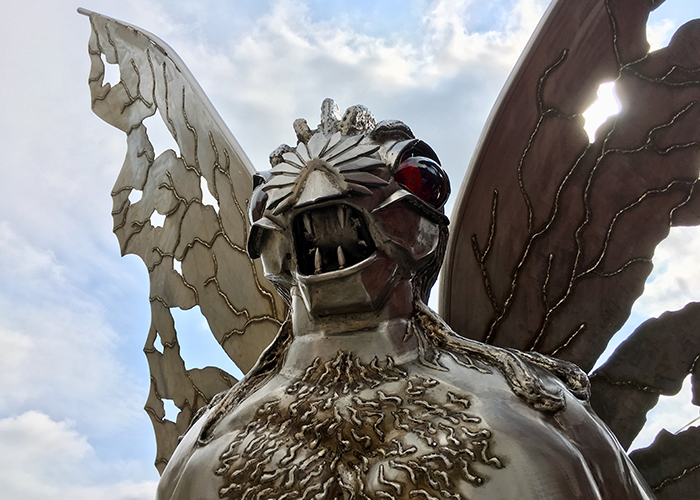 Previous Day |
Gallipolis → Charleston → Point Pleasant → Cleveland 364 mi (585.8 km) |
 More 2019 Adventures |
Good mothning, everyone!
Today, our mothsion is to take a dive into a West Virginian mothstery and a controversial piece of American mothology: the Mothman of Point Pleasant!
Since the world’s only Mothman mothseum wasn’t scheduled to open until 11, Danielle and I headed out into a misty morning to visit Charleston and the capitol building of West Virginia! Surrounded by beautiful flower beds and a vintage automobile show, the building itself, wrapped in a turban of restoration, looked like it hadn’t woken up yet! It has a similar history to California’s capitol building, hopping back and forth between Wheeling and Charleston until finally settling at this site in 1932!
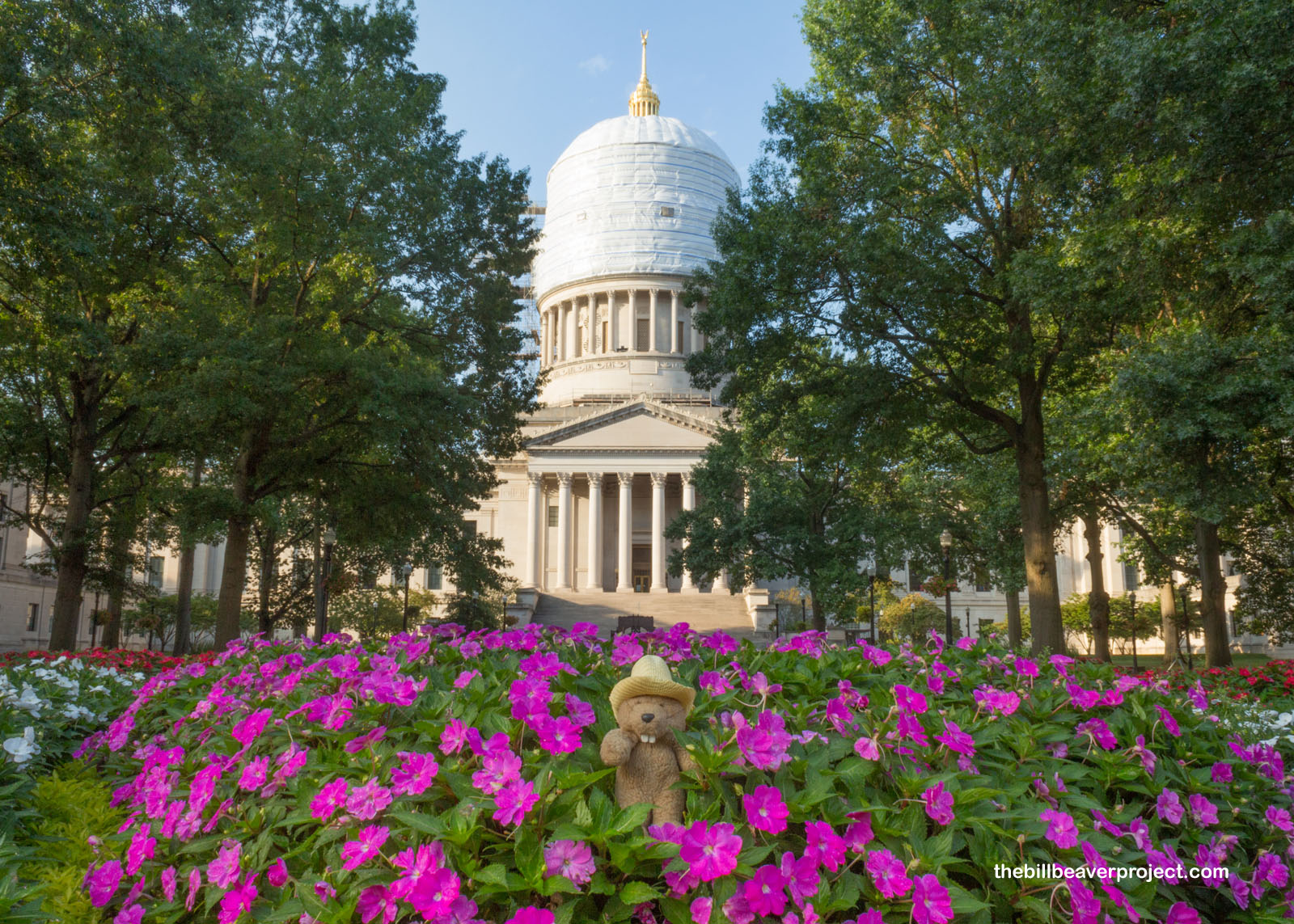 |
We walked along the bank of the Kanawha River, enjoying the sunshine and the local architecture like the Georgian Colonial executive mansion, built in 1926. Even though Charleston got its start way back in 1787 and it was the world’s top salt producer in the early 1800s, its government buildings are pretty new! That’s because a couple of fires destroyed the first two capitol buildings in 1921 and 1927, and all the government buildings got consolidated into a single complex designed by Cass Gilbert!
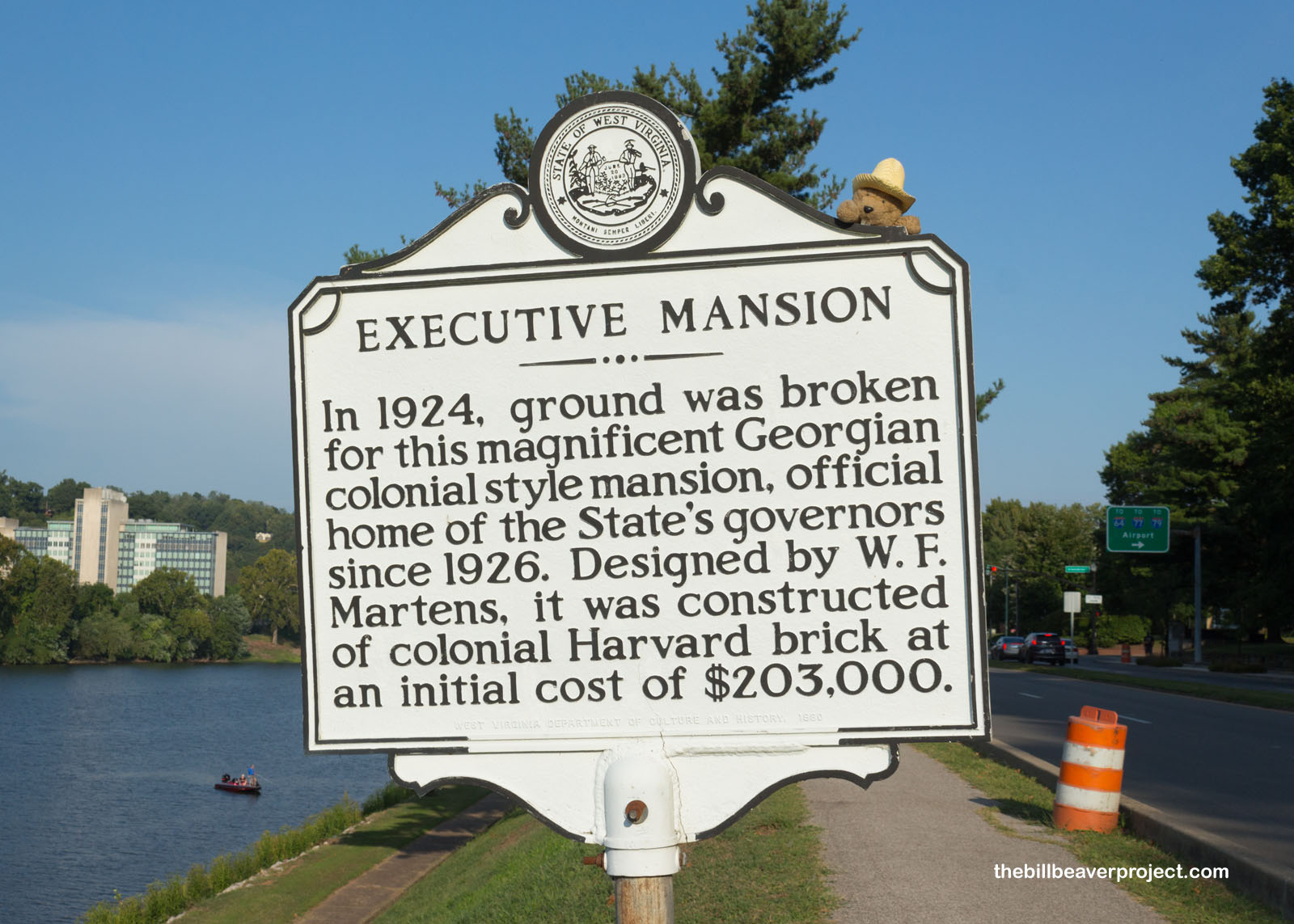 |
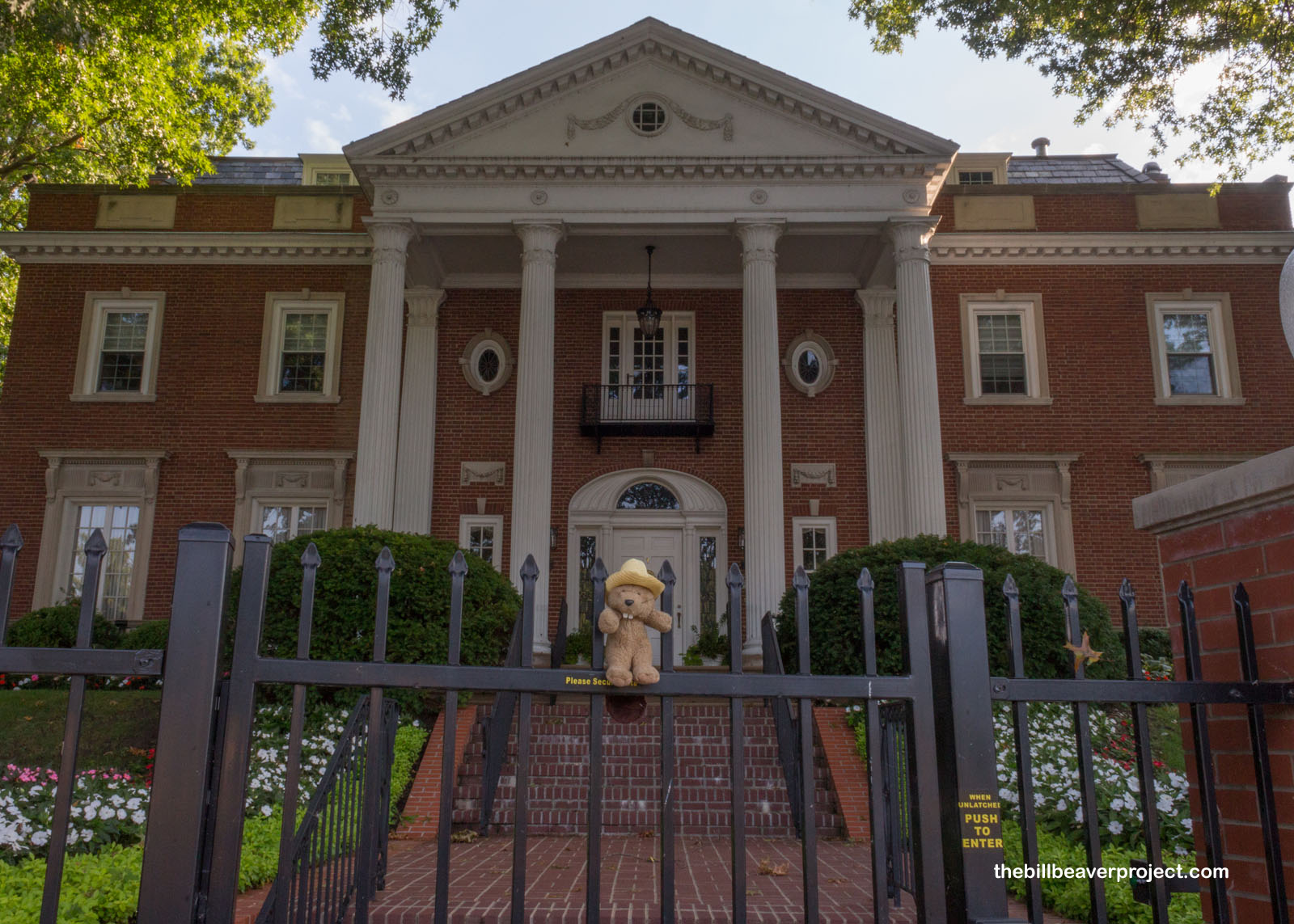 |
After wandering this historic complex, we still had time to spare before the Mothman Museum was going to open, so we milled about local Daniel Boone Park, enjoying the sun and the fountains! The name Daniel Boone sure sounded familiar, probably because he was one of the biggest names in the colonizing of West Virginia and Kentucky! While he never lived in Charleston, he traded throughout this area and had a trading post at our next destination, where Dunmore’s War, partly ignited by his son’s murder, climaxed in 1774!
 |
That destination was Point Pleasant, a French, then British, settlement. Here, British soldiers set up Fort Blair, the center of conflict between British colonists and a confederation of Shawnee, Mingo, and Lenape warriors led by Hokoleskwa, or Chief Cornstalk!
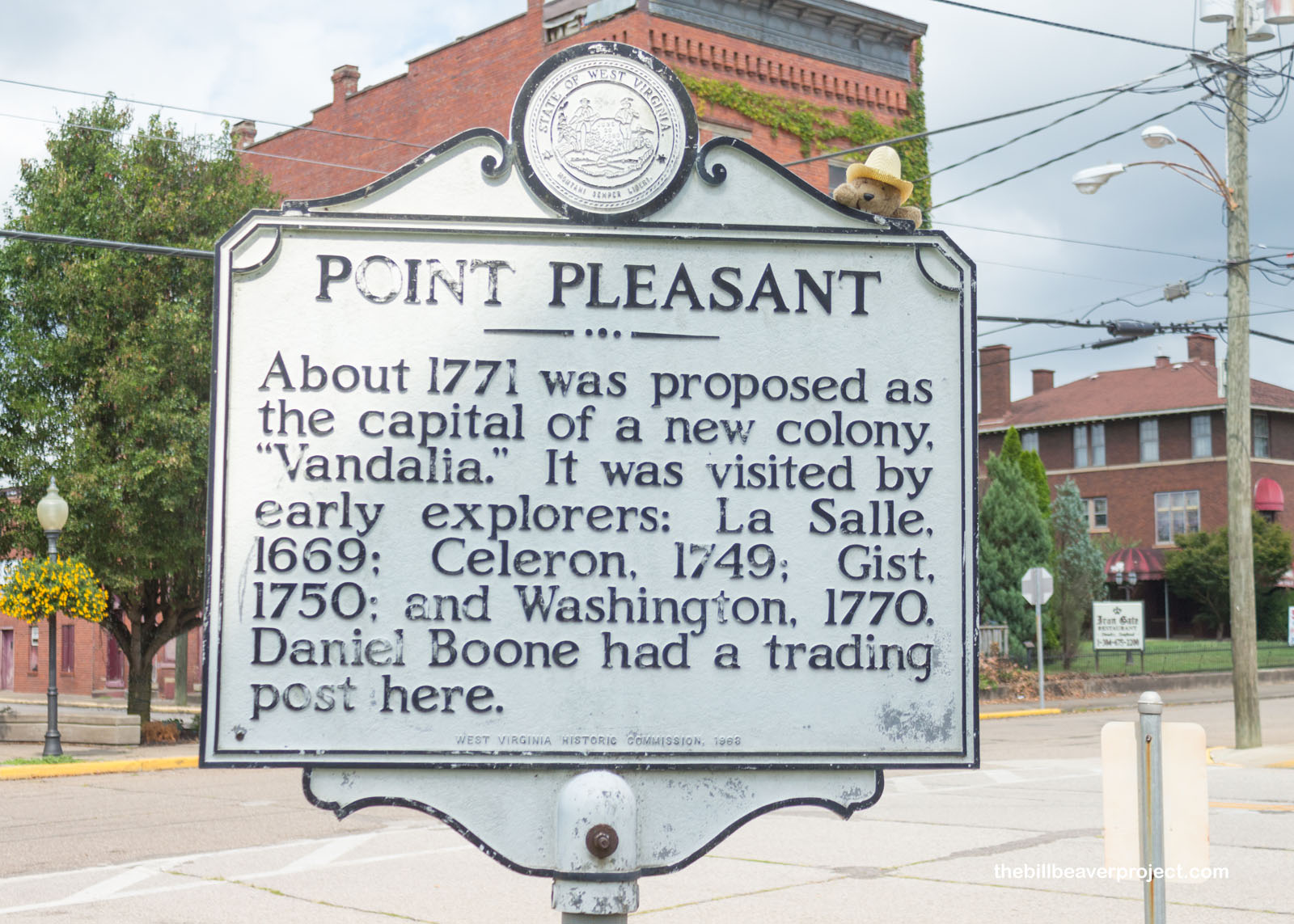 |
Three years later, at this site renamed Fort Randolph, American soldiers murdered Chief Cornstalk during a diplomatic visit to maintain his tribe’s neutrality in the Revolution. It was here, legend says, that he placed a curse on the area, a blight later blamed for economic decline and several disasters, including one involving a mysterious cryptid whose museum was about to open for the day!
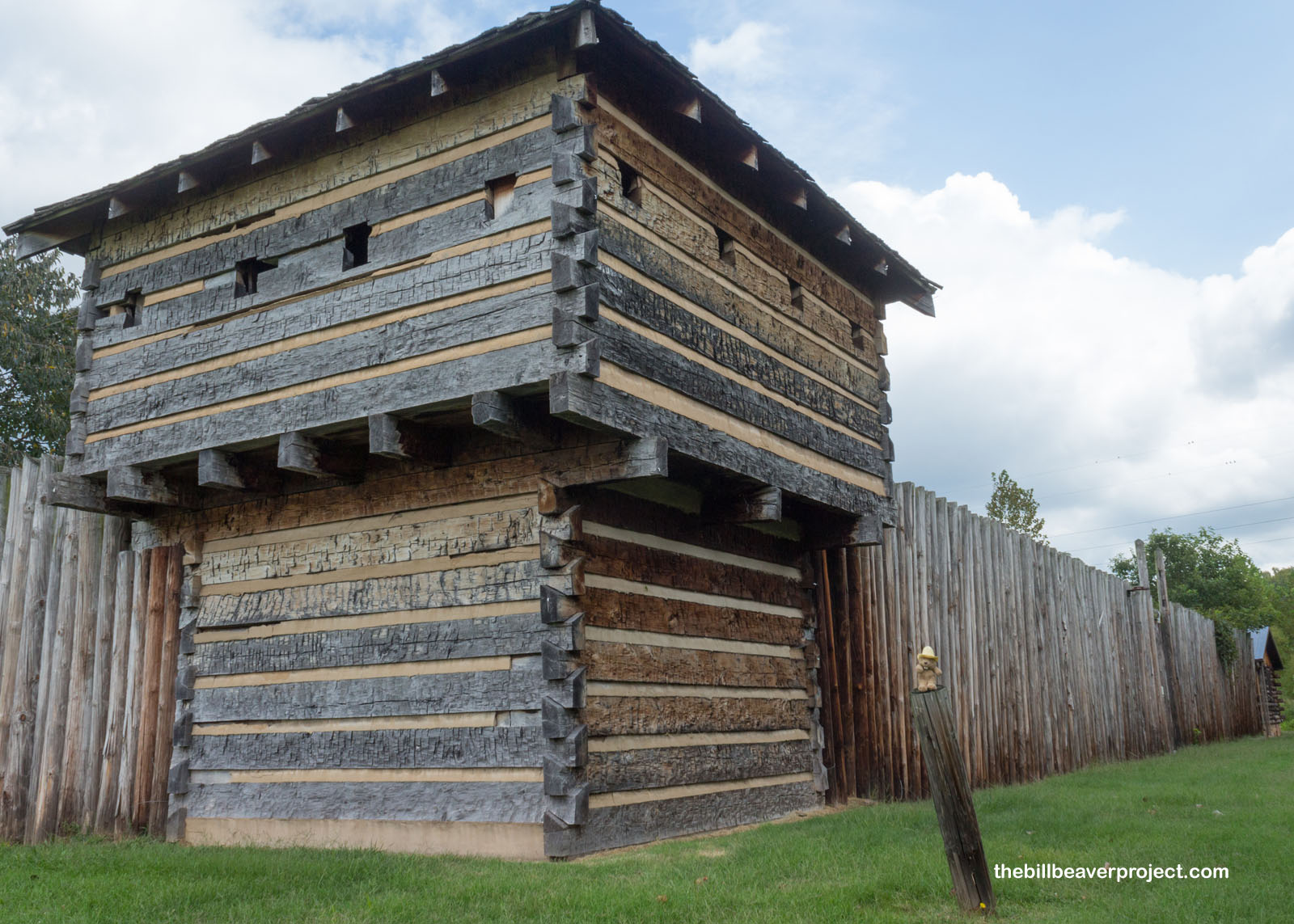 |
By 1966, Point Pleasant had already experienced some strange phenomena. Chief Cornstalk’s obelisk monument had been struck by lightning twice on clear nights! The town had been almost wiped out twice by floods, lost a whole block to a fire, and lost six residents to the explosion of an empty gasoline barge on December 22, 1953! With this history of sorrow and tragedy in an otherwise pleasant point, the mysterious Mothman swooped out of the night on November 15, 1966!
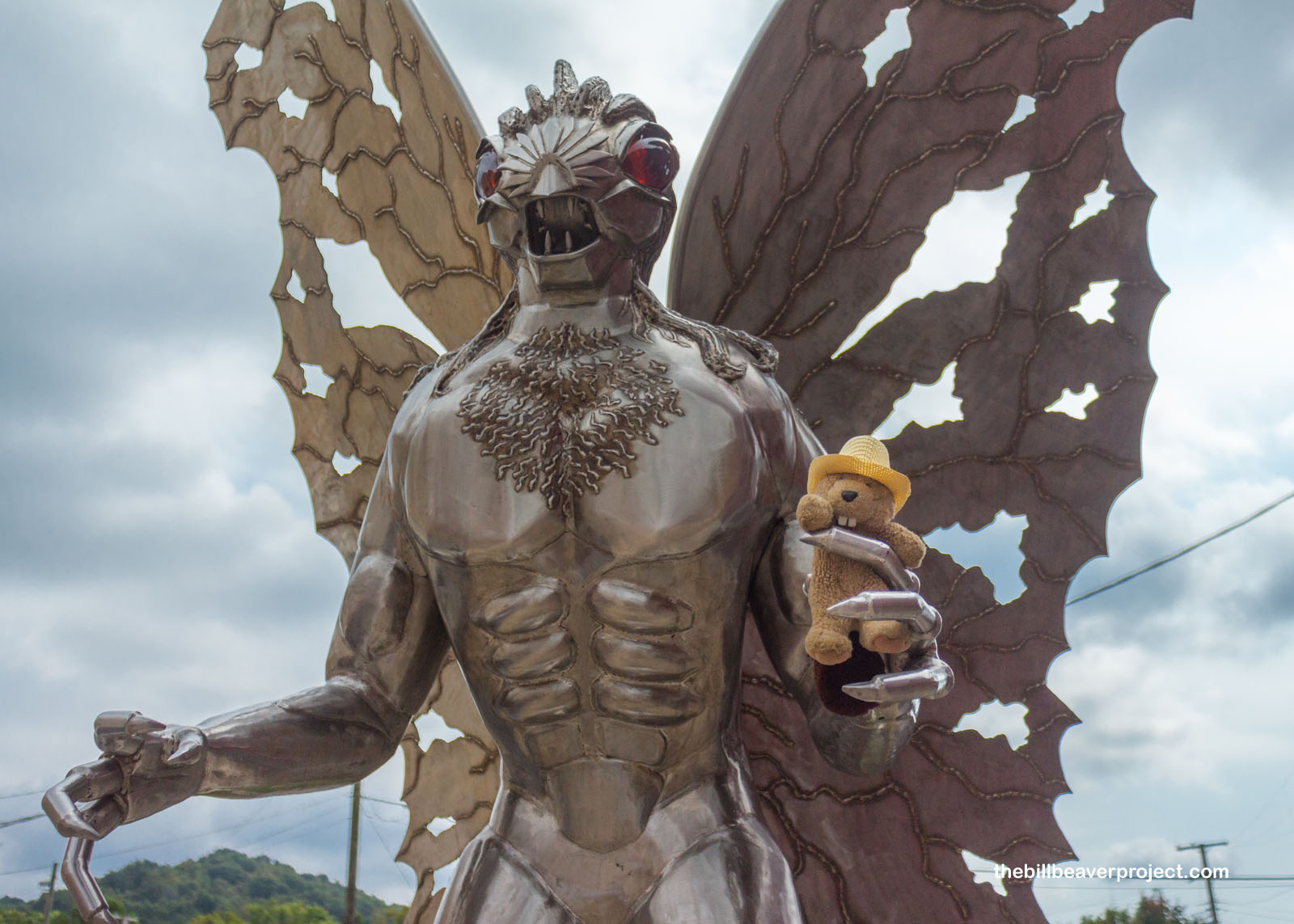 |
It had first been spotted by a gravedigger in Clenendin, 77 miles to the southeast, leaping from tree to tree, but by November 15, it had settled into Point Pleasant. Roger Scarberry and Steve Mallette reported that it had chased them and their wives down a dark road, pacing them at 100 miles per hour! It had a ten-foot wingspan and two huge, red, glowing eyes! Their reports joined many, many more in the world’s only Mothman Museum, which opened in 2005 at the heart of Point Pleasant!
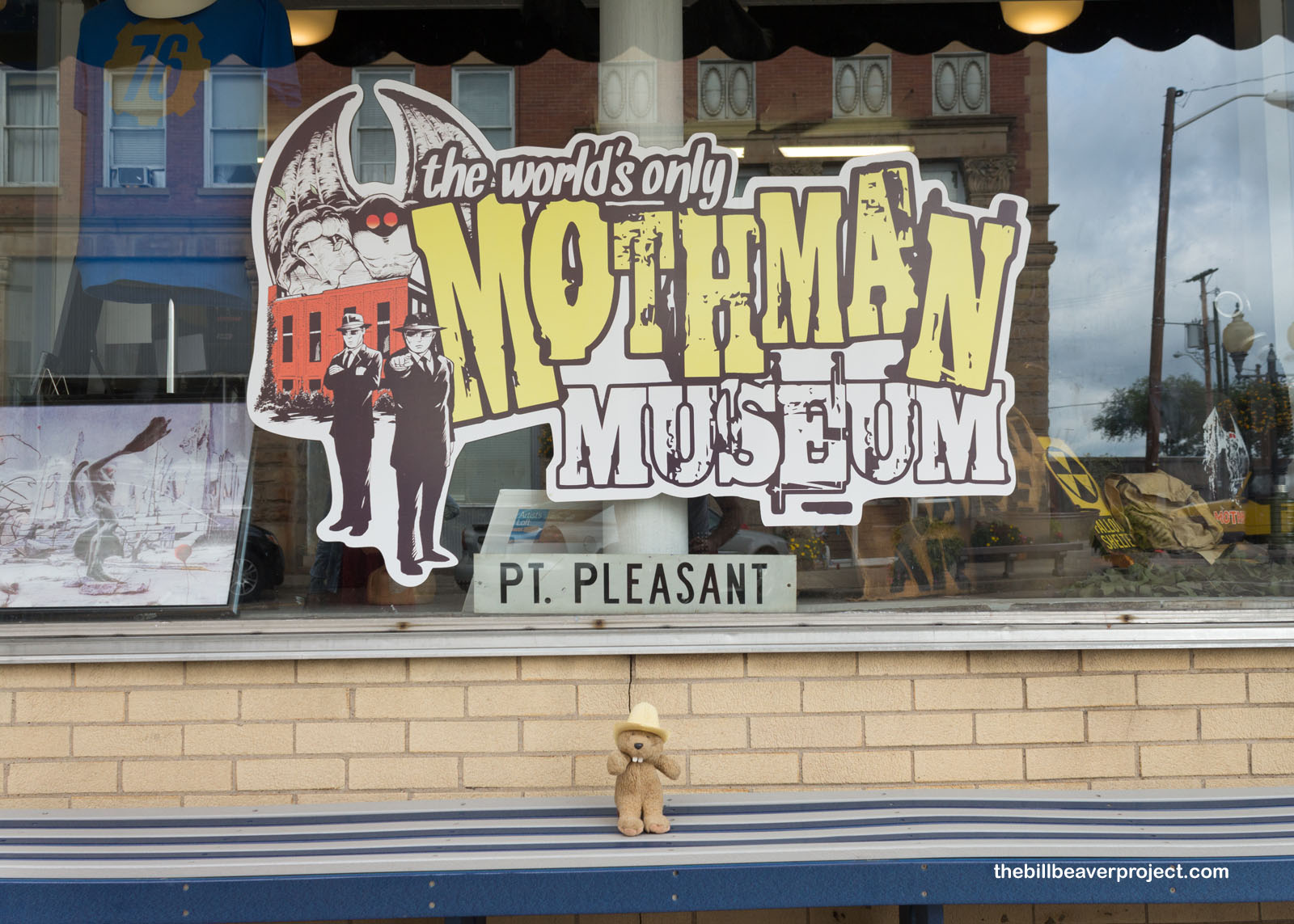 |
Inside, the museum put the lair of the Mothman at an ammunition manufacturing facility from World War II, officially called the West Virginia Ordnance site, but locally called the TNT Area! In 1981, this site was found to have leaked toxic TNT byproducts and asbestos into the groundwater and is now an EPA Superfund site, which is still a long way from being cleaned up! In some ways, the Mothman is like North America’s Godzilla!
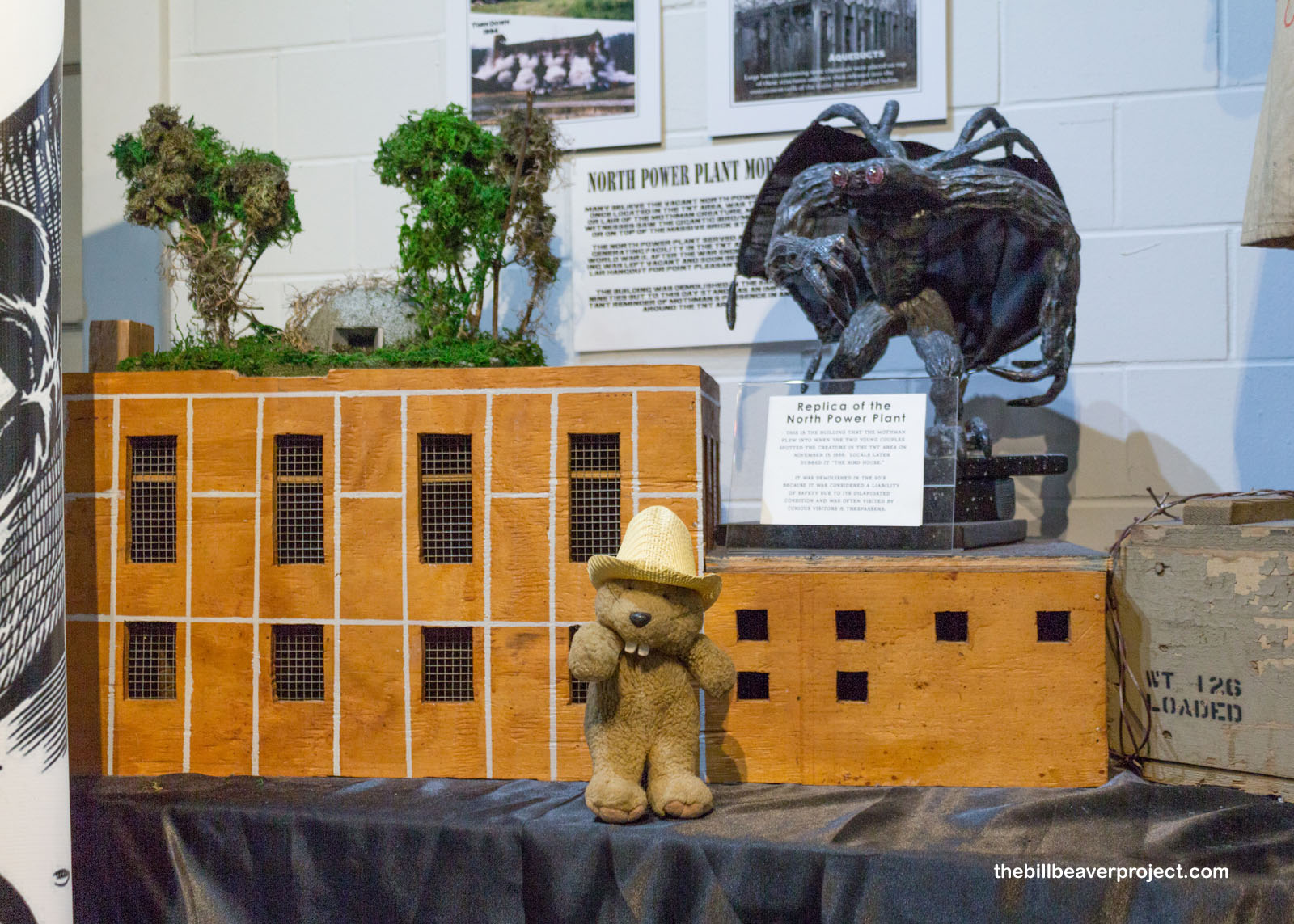 |
But the Mothman legend grew far beyond irresponsible manufacturing and chemical pollution. In one year of sightings, over 100 people reported encounters with the nocturnal flying monster, like Newell Partridge, a contractor who said the Mothman took his German Shepherd!
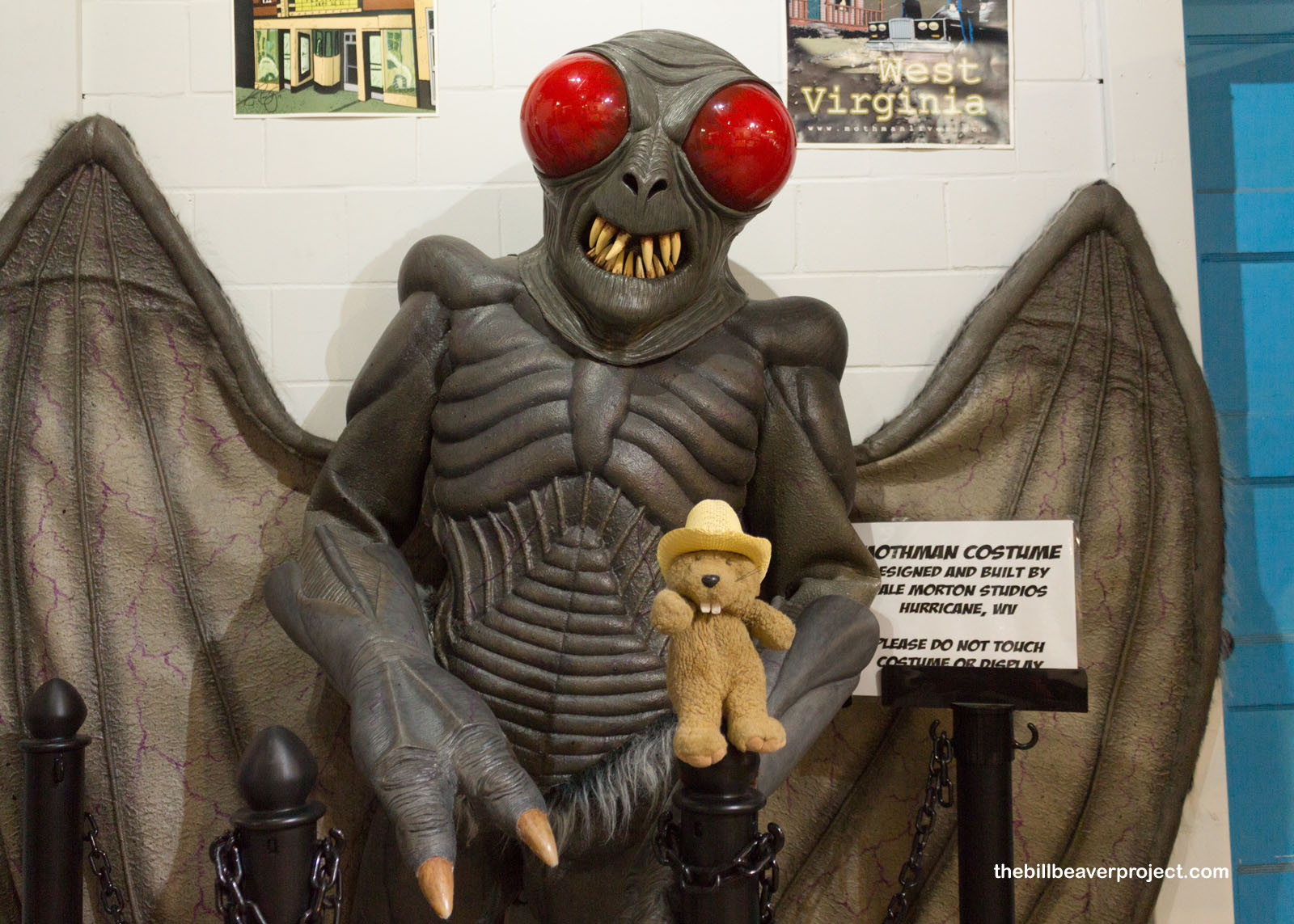 |
Few folks have done more for the Mothman’s legacy in American folklore than UFO author, John Keel, who published The Mothman Prophecies in 1975. Like The Roswell Incident by Charles Berlitz and William Moore, this book helped shape the modern story of the Mothman, connecting it with UFOs, whispered prophecies of doom, and the fabled Men in Black, a term that Mr. Keel himself popularized!
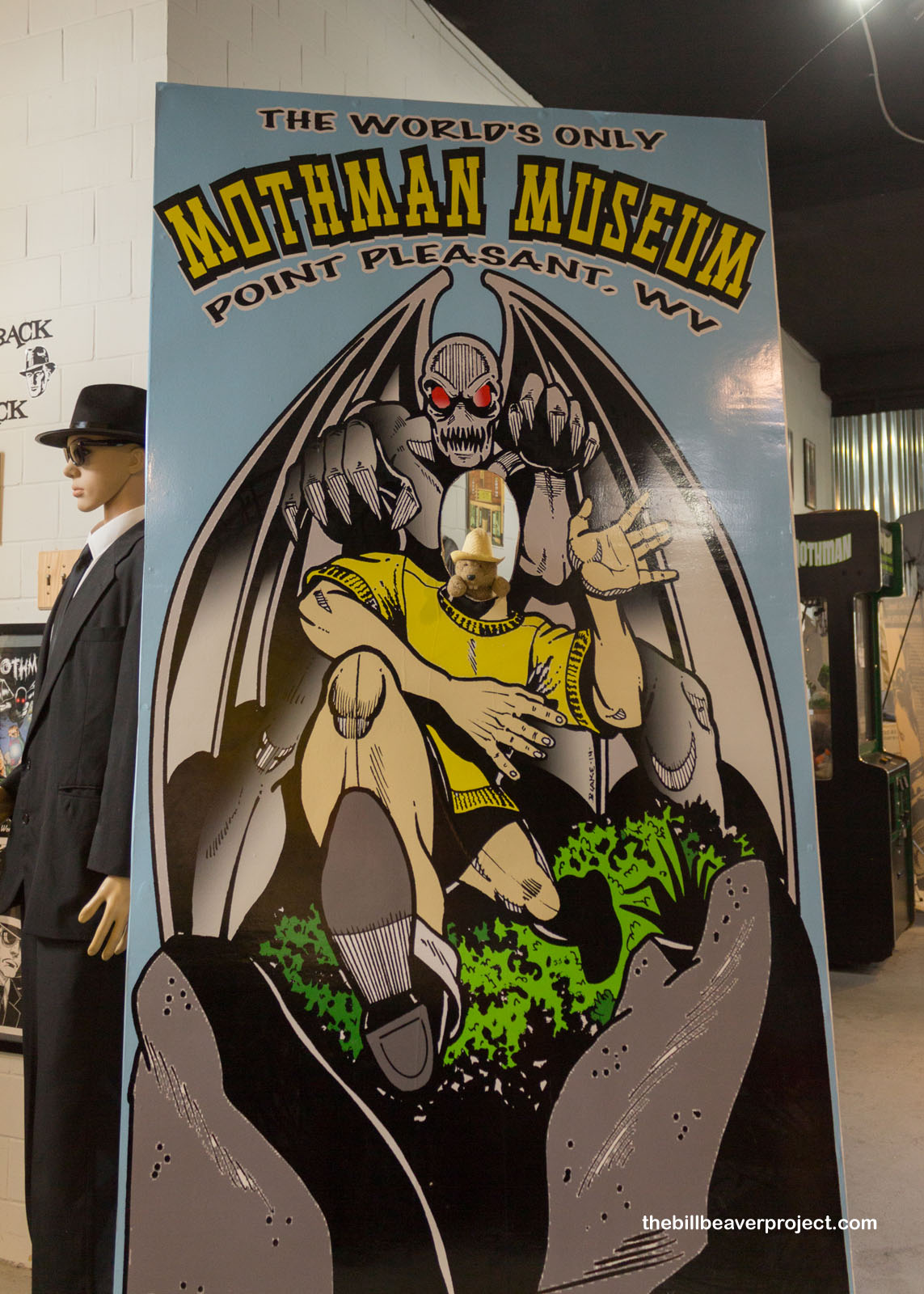 |
Most influentially, though, was the book’s connection of the Mothman to a very real and very scary disaster! On December 15, 1967, the Silver Bridge, America’s first to be built from heat-treated steel, was loaded with holiday traffic. Built in 1928 for 685 crossings per day, by 1967, the bridge was not equipped for the 9,400 daily crossings by cars weighing four times 1928 models! So, by eerie coincidence, thirteen months after the Mothman’s first appearance, the bridge’s thirteenth joint (C13N) failed and sent 46 people to their deaths in the icy Ohio River!
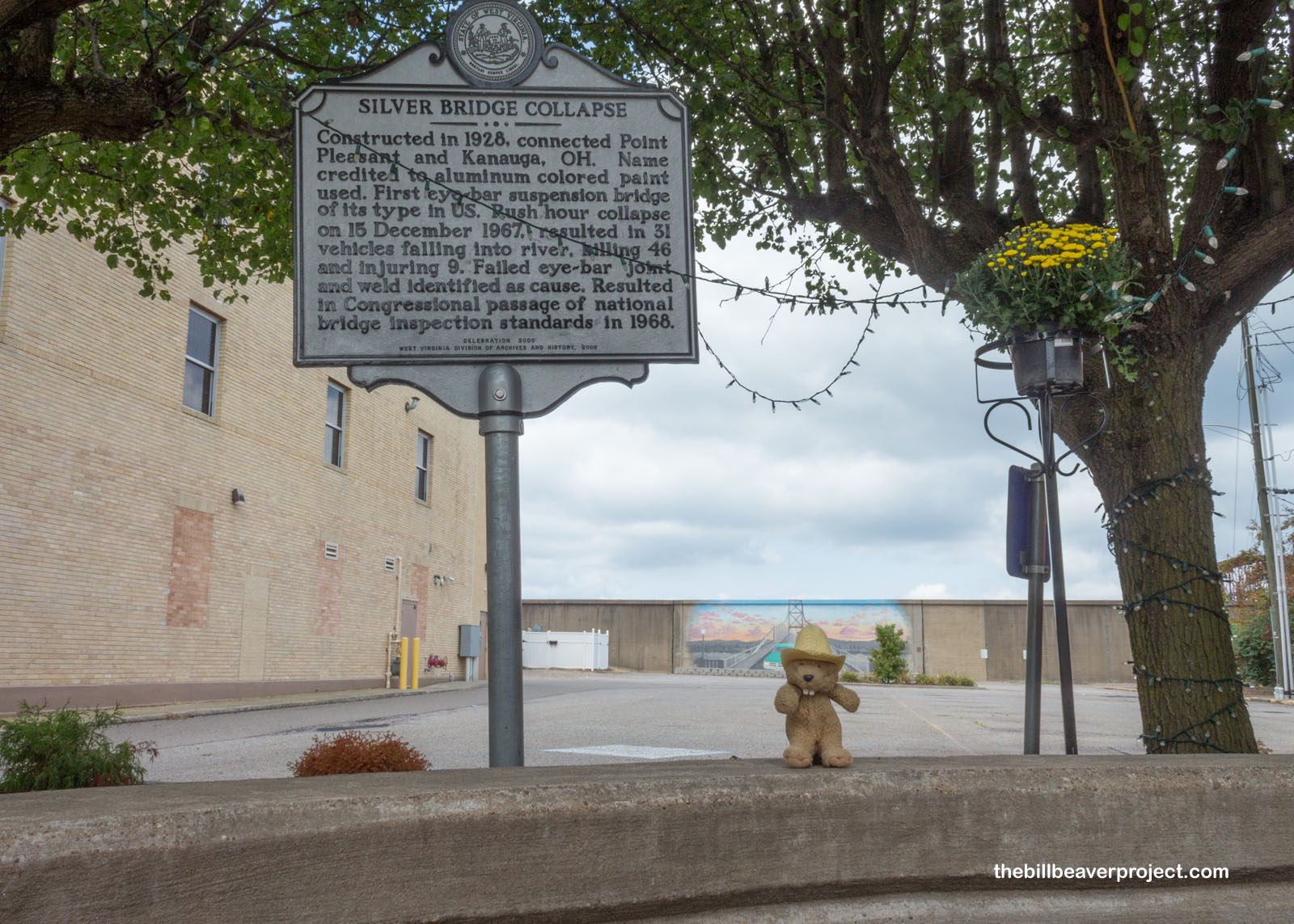 |
Those who connected the Mothman with the collapse still debate whether it had appeared to warn or cause the collapse, but regardless, after the Silver Bridge fell into the river, Mothman sightings dried right up! Today, just like Bigfoot, who has several museums, and the Jersey Devil, who has none, this cryptid is part of an American story gliding between the lines of fact and fable, giving this whole area, whether cursed or just polluted, a very distinct eeriness! It was time to be moving on.
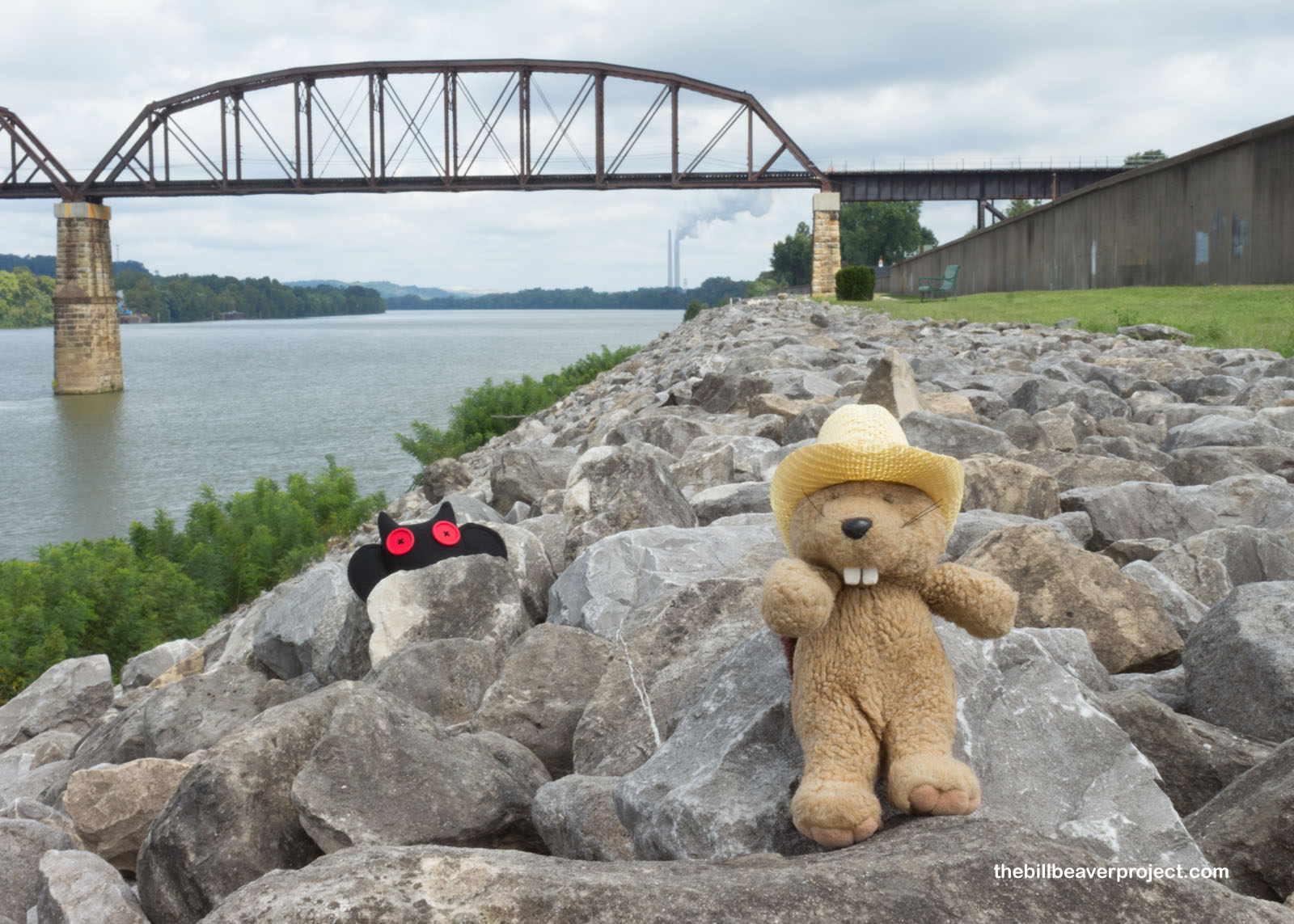 |
Soon, Danielle and I were northbound to Cleveland once more. It was time to wrap up another adventure, and while there were storm clouds overhead, I sure was glad to be making the trip in the daytime. If anything were to be flying overhead in the night, I’d prefer it to be me!
Have a mothvelous evening!

 Previous Day |
Total Ground Covered: 711 mi (1,144.3 km) |
 More 2019 Adventures |
